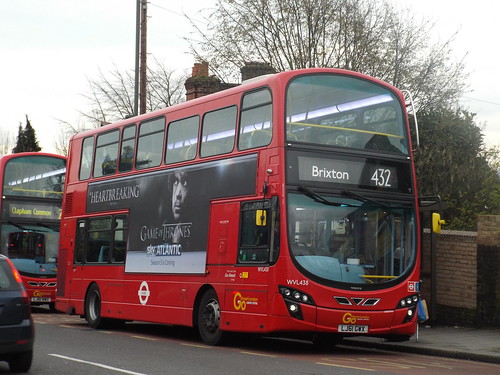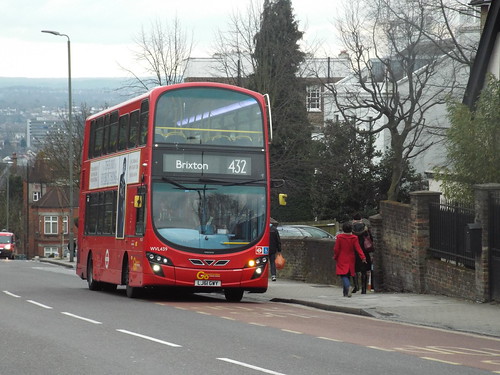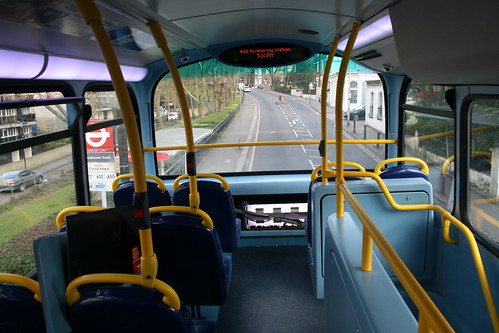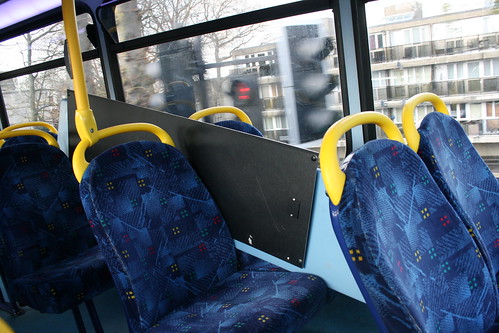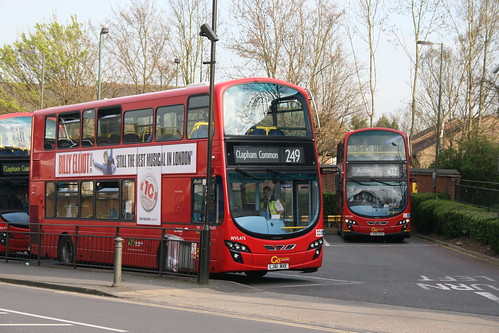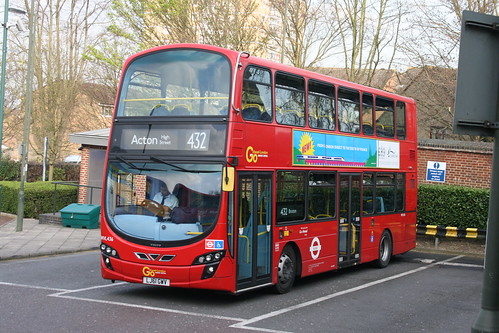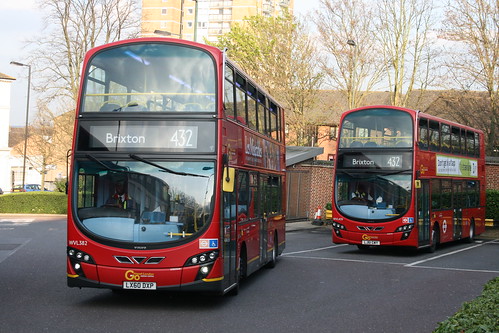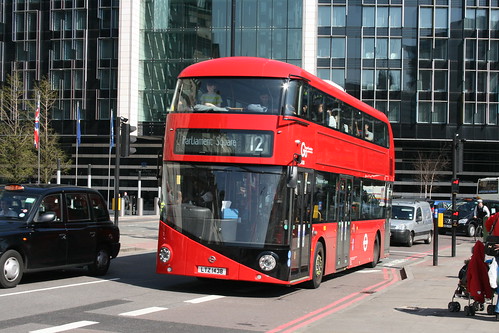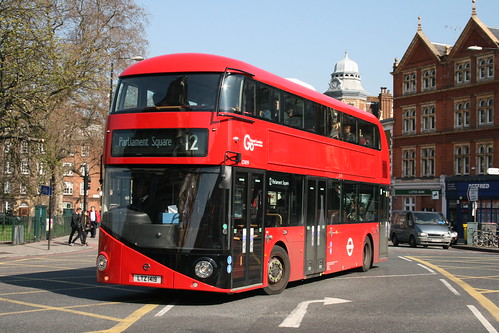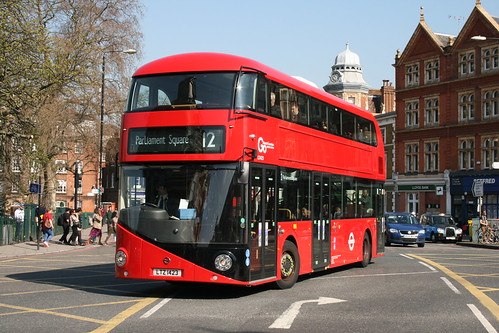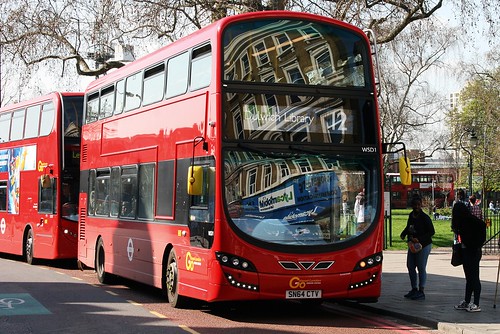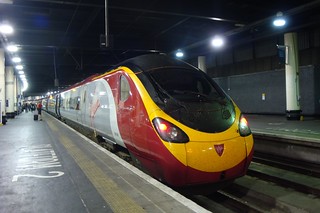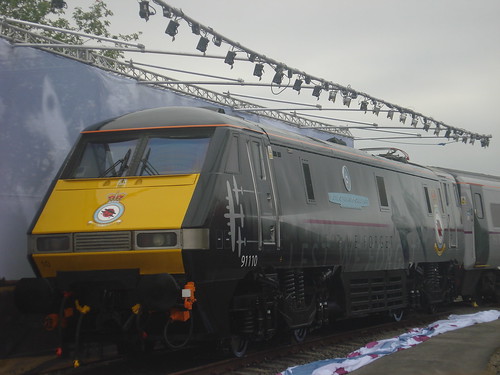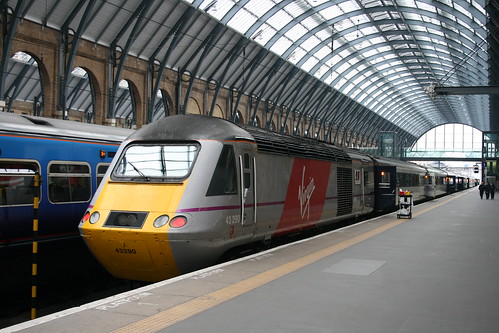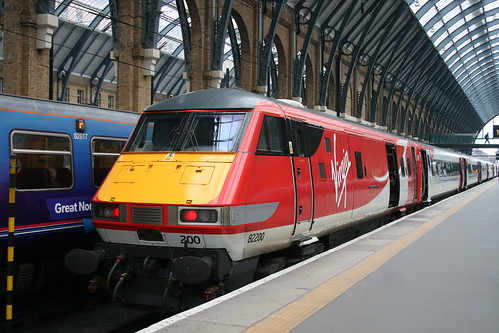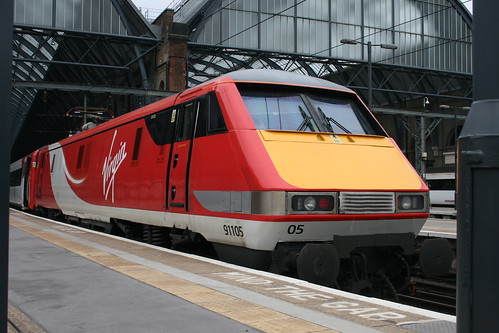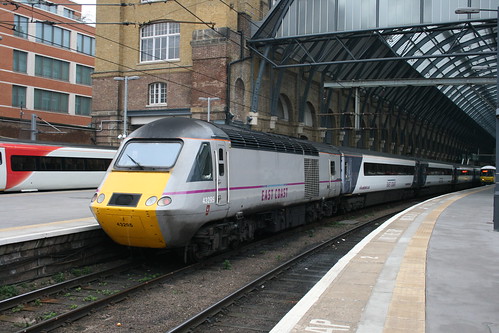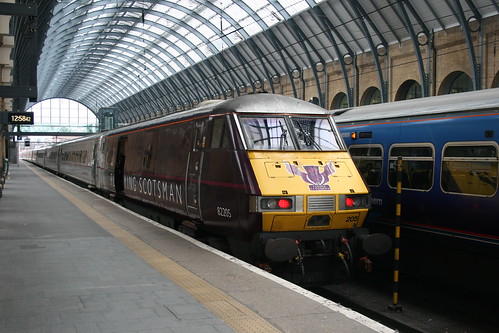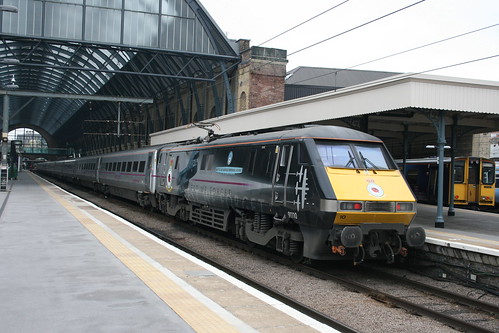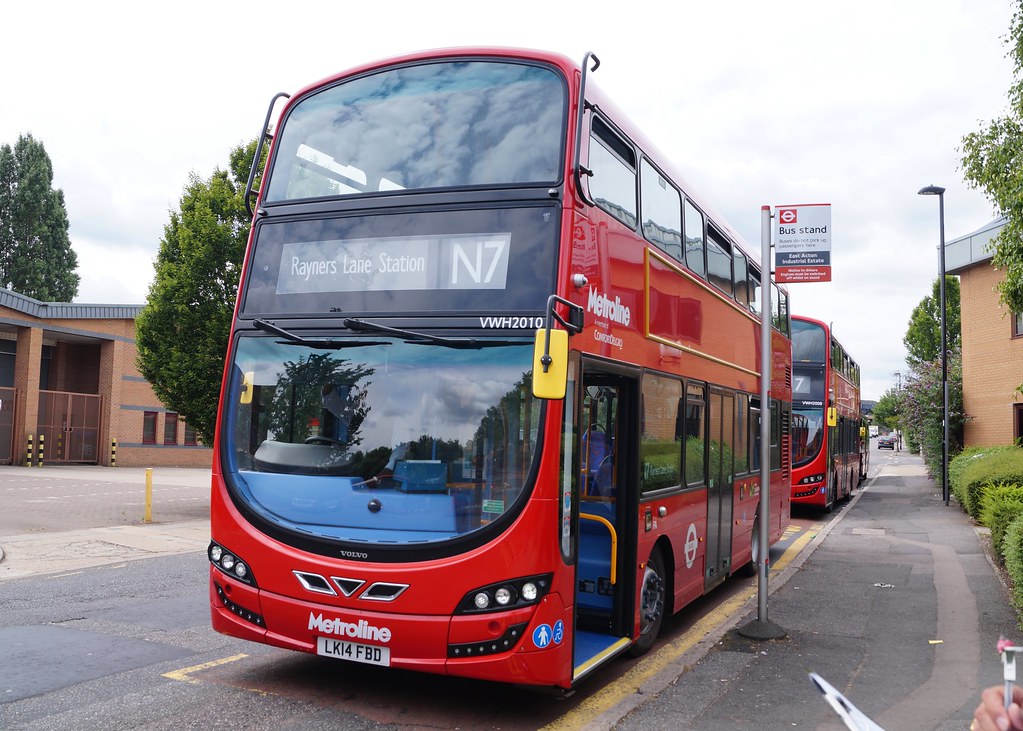The first free-boarding experiment in modern times in London, the Mercedes Benz Citaro G was really the right bus that was placed on the wrong routes. It was easier to manoeuvre than a Borismaster, and yet provided way more (theoretical) capacity. This open boarding experiment didn't need special buses, it just got off-the-peg Mercedes Citaro Gs. It went on during the term of Ken Livingstone, and the "bendy bus" became a symbol of the mayor tenure of Livingstone. However, with the mayoral election of 2008, Livingstone was replaced by Boris Johnson, who decided to get rid of these buses. They were replaced by conventional buses, and eventually Borismasters (Routes 38, 453 and 12). The irony that open boarding returns back to these routes, only in more expensive terms replacing buses that were fairly new.

London Central MAL84 (BX54 UDO) on Route 12, Westminster, 17/06/07
The original blinds for the articulated Citaros were oddly in New Johnston font, opposed to the normal Johnston font on blinds.
MAL84 itself started out as part of the batch that converted the 12 to OPO articulated buses, converted from Routemaster on the 6th November 2004 to these buses. On the 5th November 2011, the 12 turned to conventional bus operation, thus this bus ended up being obsolete for London. It ended up in the Go-South Coast events fleet as their 2906, mainly for the Isle of Wight Festival. However, as of when this was written, this bus is under a SORN and is off the road. To my knowledge, I am completely unsure where it is, the last time this has been seen was for the 2013 Isle of Wight festival.
Route 12 is a route with a long and interesting history, notably as being a very long route...
By 1934, it was a very long route that ran in two sections. The whole route was Willesden Junction to South Croydon, but buses ran Willesden Junction-Oxford Circus/Dulwich and Oxford Circus-South Croydon. The Monday-Friday PVR was 92. Yes, nearly 100. The 25 would be screaming for something close to that PVR today!
Between 1942 and 1945, for possibly war reasons, the route on at least some part of a Sunday ran in two completely separate sections as Oxford Circus-Shepherd's Bush was not served. From 1952, the route soon had a Monday-Friday PVR of 113 and by this time was a straightforward Willesden Junction-South Croydon in two parts route. From 1968, it started to have a nominal allocation of Routemasters amidst the RTs. In 1972, the route was shortened to Norwood Junction. The route was then shortened still to end up by 1991, as Shepherd's Bush-Dulwich. In 1994, it ended up being Notting Hill Gate-Dulwich (still in two parts). With the removal of Routemasters, the 12 ended up in its present state, all in one part.
The London Transport scheduling system had a limit of four garages running a bus route - this just coincidentally was the amount of garages operating the 12 during the 1970s.

